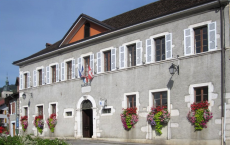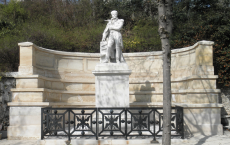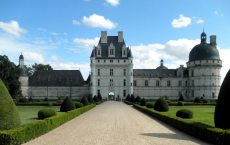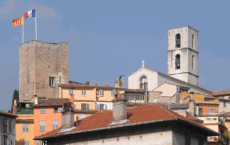From one island to another
Thus Napoleon himself, at the end of his life, could have evoked the extraordinary journeys that had led him from his native Corsica to Elba then to St. Helena, where he would pass away.
Between these insular stays, not less than three continents were the scene of his exploits: the deserts of Asia and Africa during the exotic Egyptian adventure, and all over Europe, up to its limits in the context of the invasion of Russia.
Our website, which offers an unique geolocation tool of places where Napoleon stood every day of its existence (© 2014-2015 Lionel A. Bouchon), outstandingly illustrates their list, that other authors had already published in reference books.
All those places are to be visited for the Napoleonic tourist, a species which is far from being in danger of extinction, two centuries later.
Battlefields are obviously the places that attract him the most. One can see how successfully Belgium commemorated in June 2015 the bicentenary of the battles of Ligny, Quatre-Bras and Waterloo. And what an emotion when following the Chemin des Dames on the Craonne plateau in north-eastern France, or seeing the "Austerlitz sun" rising above the Pratzen Heights in Moravia!
There are also more peaceful locations that Napoleon attended in his childhood (Corsica, Brienne ...) then through the Empire or the Kingdom of of Italy: castles he lived in, landscapes he travelled through, roads and passes he used, for example during the astounding "Flight of the Eagle" in 1815.
But the French Empire is not limited to the Emperor, as the title of this website summarizes so well: the Imperial family, the officers, politicians, scholars, artists, even enemies, all contributed to create the legend of the Napoleonic era, unique period in the history of humanity where everything seemed to be possible ... One can remember these characters through their places of birth, their homes, paintings and statues depicting them, without forgetting to honor their memory by visiting their graves.
One can also recognize the Napoleonic tourist by the fact that, back home after each expedition, having just dropped his suitcases and watched the pics he brought from it, he closes his eyes, visibly happy, and inevitably whispers: Where shall I go, next time?
Warning: approaching a tourist Napoleonic exposes to very high risk of contagion!
A day at Les Invalides ...
The last time I visited the Dome Church in the Hôtel des Invalides located in Paris' seventh arrondissement, I stopped to admire a fresco some 90 meters (nearly 100 yards) above my head . It depicts Saint Louis (King Louis IX of France) presenting arms before Jesus Christ, the Virgin and a host of angels. I could never grow tired of this scene. I knew that my next step would be to walk around the circular balustrade overlooking the crypt. As soon as I began climbing the staircase between the tombs of the compatriots Duroc and Bertrand, I was filled with a unique feeling of awe. I was sure this emotion would reach its height at the twin sight of the burial of the King of Rome and the imposing sarcophagus of the Emperor. And I would undoubtedly shed a tear as a testament to my emotional state during my visits to the imperial tomb.
It was then that a young couple temporarily interrupted my reverie. From their smiles and the camera the man was holding, I understood they wanted me to take their picture in front of the crypt.
- Are you English?
- American!
- Fine!
I heard myself explaining, in broken English, that it was traditional for visitors to proclaim Vive l'Empereur!
while having their picture taken here. Visibly delighted upon learning this custom, the couple repeated the words enthusiastically with a slight, but charming, accent and the moment was immortalized on film.
I wondered at these two young Americans. As citizens of one of the oldest republics in the world, the emblem of freedom par excellence, would they have proclaimed Vive le Roi! ("Long live the King!") if they had visited the Basilica of Saint-Denis? Nothing is more uncertain... It amused me to think that their enthusiasm was a testament to their subconscious attachment to the values of 1776 (and to the constitution of 1787) that had spread to France, in their own way, first in 1789 and then under the Empire...
Didier Grau





